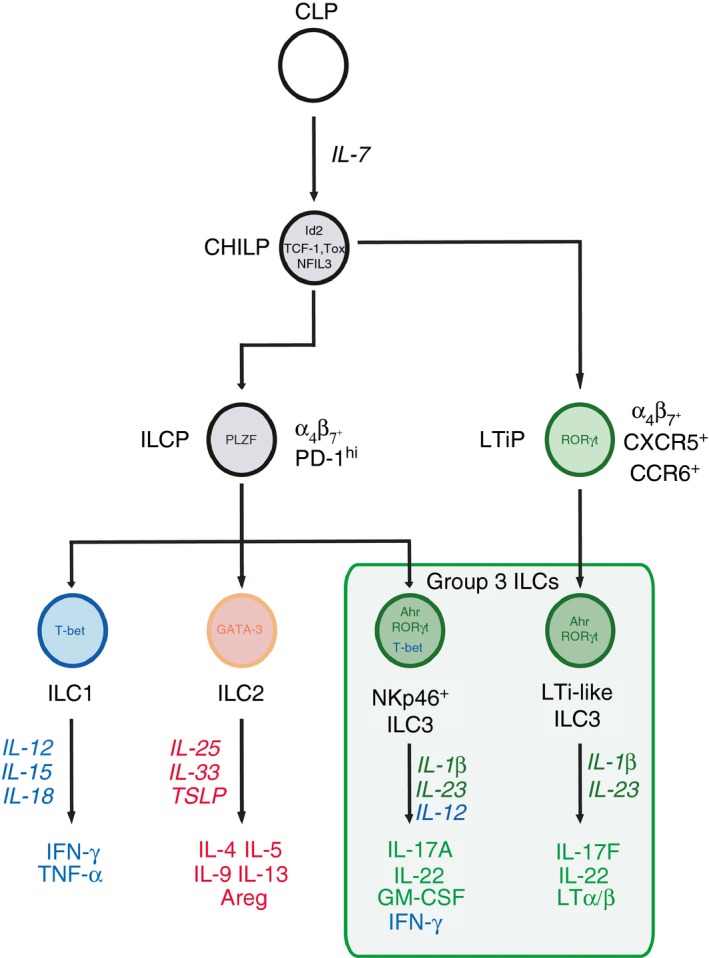Figure 1.

Ontogeny of group 3 innate lymphoid cells (ILC3). All ILC subsets are derived from a common lymphoid progenitor (CLP), Initial commitment towards an ILC fate is associated with up‐regulation of the transcription factor inhibitor of DNA‐binding protein (ID2) and is dependent upon interleukin‐7 (IL‐7). This progenitor population gives rise to all IL‐7receptor (IL‐7R) expressing ILC family members and has been termed the common ‘helper’ ILC progenitor (CHILP). Recent evidence suggests that bifurcation of progenitors occurs downstream of the CHILP. Acquisition of promyelocytic leukaemia zinc finger (PLZF) expression and expression of programmed cell death protein‐1 (PD‐1) mark further commitment to the ILC lineage (ILCP). However, while ILCP give rise to ILC1, ILC2 and NKp46+ ILC3s, these cells fail to generate lymphoid tissue‐inducer (LTi)‐like ILC3 progeny. In contrast, a distinct LTi‐precursor (LTiP) lacking PLZF‐expression is defined as CXCR5+ α 4 β 7 + and CCR6+ and gives rise to fetal LTi and adult LTi‐like ILC3. The bifurcation of group 3 ILC subsets during development may imprint differential transcriptional programmes that underlie the function of mature ILC3 subsets in the periphery.
